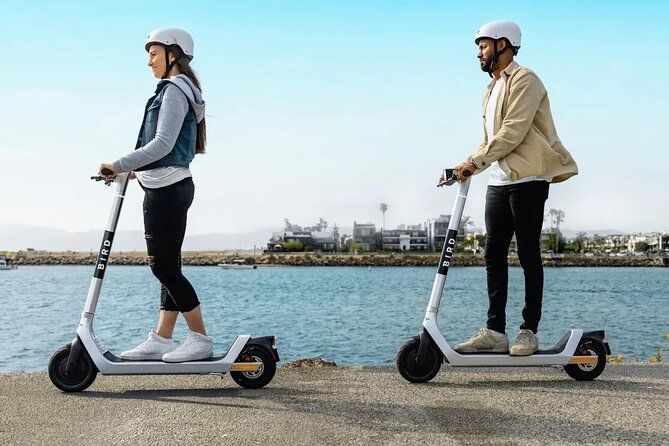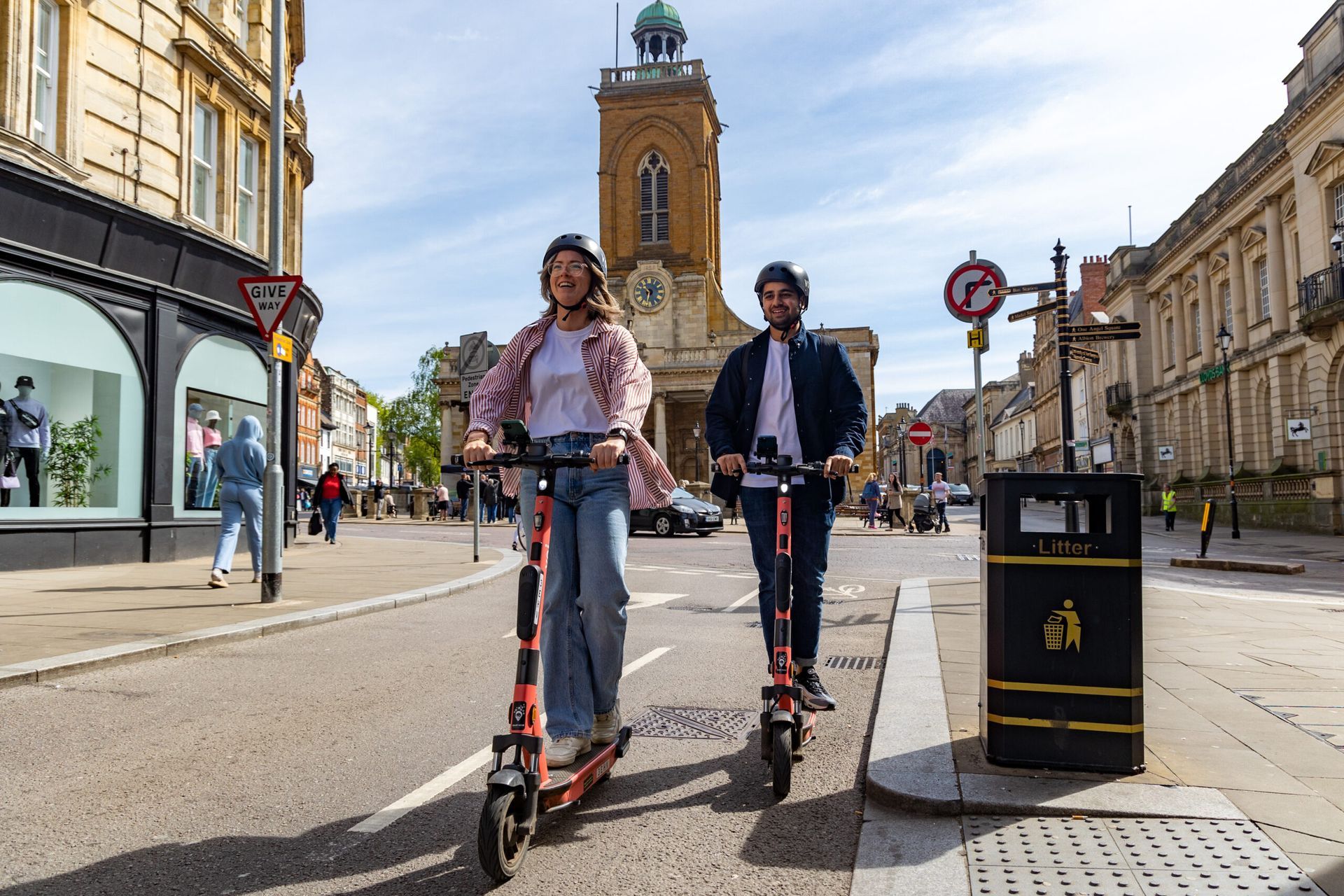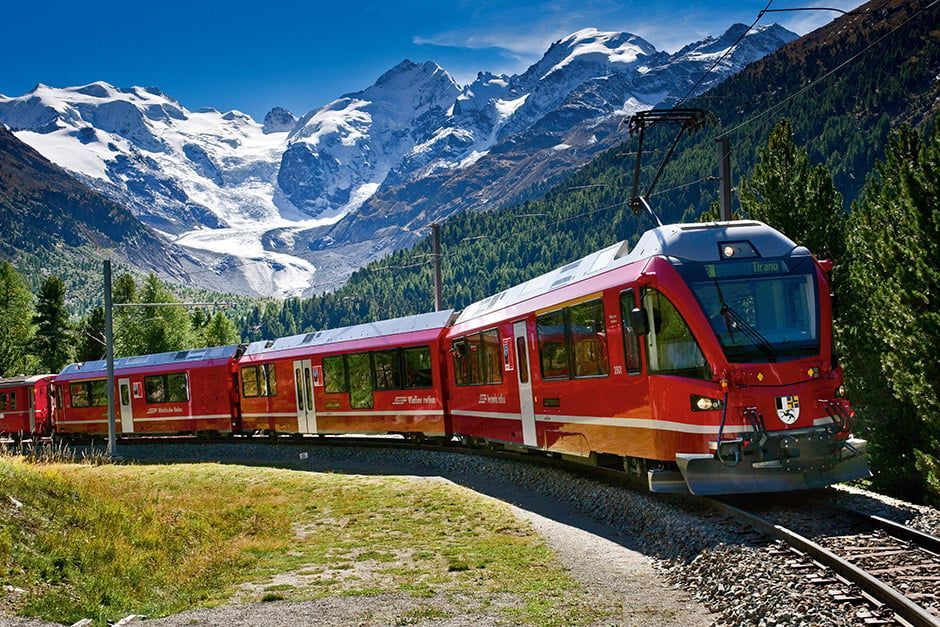The future of shared electric micromobility
Last week’s UK BBC Panorama episode, “E-Bikes: The Battle For Our Streets”, sparked some controversy by presenting an investigation into the rise of electric bikes in urban environments. Organisations such as Cycling Electric, Cycling Weekly, and the Bicycle Association have responded. The episode faced widespread criticism for inaccurately portraying legal e-bikes and the broader micromobility movement. We spotted some misleading footage and a lack of expert analysis, blurring the line between road-legal e-bikes and illegal electric motorbikes. Along with the organisations mentioned, we believe that such misrepresentations risk damaging public perception of an industry that offers a promising pathway toward more sustainable cities.
In a moment that captures the spirit of micromobility’s future, actor Timothee Chalamet recently arrived at the UK premiere of the Bob Dylan biopic A Complete Unknown riding a Lime electric bike. This unconventional entrance at London’s BFI Southbank not only turned heads but also underscored the practicality and accessibility of shared e-bike schemes in urban settings. Chalamet’s choice to cycle to the premiere, despite the ensuing £65 fine for improper parking, demonstrates how shared micromobility can address real-world challenges like traffic congestion while making a bold statement about sustainability. As cities like London continue to embrace shared micromobility options, moments like these highlight their potential to shape a cleaner, more connected urban future.
The episode and subsequent reactions underline the critical need for accurate, balanced discussions about shared electric micromobility solutions, including both e-bikes and e-scooters. At In the Round, our blog below aims to clarify facts, highlight the benefits and challenges of shared micromobility, and explore what lies ahead for these schemes worldwide…
Photo source: Sky News

Shared electric micromobility – a global movement
Shared electric micromobility schemes have expanded rapidly in cities around the world, offering new solutions for first and last mile transport. From London’s Lime e-bikes and e-scooter scheme to Paris’s Velib’, shared e-bike and e-scooter systems provide an accessible, low-carbon alternative to cars.
- Europe: Cities like Copenhagen and Amsterdam, already known for their cycling infrastructure, have embraced shared e-bikes as a complement to traditional bicycles. Paris has also seen success with its shared e-scooter programme, although the city recently voted to ban rental e-scooters due to safety concerns.
- North America: New York City’s Citi Bike programme now includes electric bikes, offering commuters a quicker and less strenuous way to navigate the city’s dense streets. Similarly, San Francisco have integrated shared e-scooters as part of their broader sustainable transport strategies.
- Asia: Shared e-scooter and e-bike schemes have proliferated in cities such as Singapore, Beijing, and Tokyo. With dense urban populations and significant congestion, these cities see micromobility as a vital tool for improving urban mobility.
- South America: In cities like Bogota, shared e-bike schemes complement the city's extensive network of cycle paths, offering residents a sustainable alternative for short trips.
Photo source: Viator, Copenhagen

The pros and cons of shared electric micromobility
Research conducted by organisations such as the International Transport Forum (ITF) and the European Environment Agency (EEA) has highlighted the role of electric micromobility in enhancing urban mobility by offering an eco-friendly, cost-effective mode of travel that complements public transport. The World Resources Institute (WRI) has also underscored the contribution of micromobility to sustainable urban development, promoting cleaner air and reducing the reliance on private car ownership. However, the rapid growth of shared micromobility systems, as seen within the BBC’s Panorama episode, has also raised concerns regarding safety, infrastructure, footpath clutter and equity. Studies by various research bodies, including the European Commission and the ITF, continue to explore how these schemes can be better integrated into existing urban transport networks to maximise their benefits. We highlight some of the main pros and cons below…
Pros:
1. Reduced carbon emissions: A key advantage of shared electric micromobility schemes is their potential to substantially cut greenhouse gas emissions by replacing short car trips. Numerous studies show that e-scooters and e-bikes have a significantly smaller carbon footprint compared to conventional vehicles. Since roughly 60% of trips between 1 and 2 miles in the UK are currently made by car, electric micromobility offers a compelling, lower-emission alternative.
2. Reduced congestion: By offering an alternative to cars for short-distance trips, micromobility schemes can help reduce traffic congestion, leading to faster travel times and less pollution.
3. Improved accessibility: Shared e-bikes and e-scooters offer a flexible transportation solution for individuals who may not have a vehicle or traditional bicycle. They are particularly valuable in cities where public transport does not reach all areas. Additionally, shared schemes provide a more affordable and cost-effective travel option compared to the expenses of owning a private vehicle.
4. Health benefits: While e-bikes require pedalling, they reduce the physical strain compared to traditional bikes, encouraging more people to cycle, particularly older or less fit individuals.
Cons:
1. Safety concerns: A major criticism discussed in the BBC Panorama episode, as well as other studies, is the safety of e-bikes and e-scooters. While legal e-bikes are speed-restricted, accidents involving shared micromobility vehicles have sparked concerns. Research indicates that electric micromobility devices do not pose a greater safety risk than car accidents, but cities require strong infrastructure and regulations to help reduce potential risks.
2. Infrastructure challenges: As one of the key takeaways mentioned within the BBC Panorama episode and highlighted across other studies, without adequate cycling lanes and parking solutions, shared micromobility schemes can lead to cluttered pavements and unsafe road conditions. Investments in infrastructure are essential for the long-term success of these programmes.
3. Battery and lifecycle impact: While e-bikes and e-scooters offer a lower-carbon alternative to cars, there has been much research on the environmental impact of battery production and disposal, which remains a concern. Operators must focus on sustainable lifecycle management.
4. Operational issues: Vandalism, theft, and improper parking of shared vehicles are common challenges. Cities and operators need to implement effective management systems to ensure smooth operation.
5. Impact on health, wellbeing and public transport use: One potential issue with electric micromobility is that it may replace trips that would otherwise be made by walking, cycling, leading to a reduction in the health benefits associated with physical activity. Additionally, there is evidence to suggest that electric micromobility can abstract users from local bus services and other public transport options. For example, a study analysing the impact of e-scooters in Paris found that a significant proportion of e-scooter trips replaced journeys previously made by metro and active modes, resulting in an increase in CO2 emissions. Research from the UK’s DfT suggests that whilst the shift from private motor vehicles to e-scooters is increasing, it is still a concern. To address this, promoting a balanced approach that encourages both electric micromobility and active travel through improved infrastructure and multi-modal transport systems is important.
Photo source: Future Transport News

The future of shared micromobility
Despite the challenges, the future of shared electric micromobility looks promising. Cities are increasingly recognising the role of e-bikes and e-scooters in creating sustainable urban environments. Negative effects of micromobility need to be weighed against the significant consumer benefits they offer and their potential to replace less sustainable trips. Data on the negative impacts of micromobility suggests these are comparatively small.
To give shared micromobility schemes a genuine chance to thrive, we have identified some key prerequisites for success. These factors could play a pivotal role in shaping the future of shared micromobility:
- Integration with public transport: Many cities are working on integrating shared micromobility schemes with existing public transport networks. Seamless connections between e-scooters, e-bikes, buses, and trains could encourage multimodal transport, reducing car dependency.
- Integration with journey planners and Mobility as a Service (Maas) platform: Incorporating shared micromobility options into journey planning apps and MaaS platforms is essential for user convenience. These platforms should present micromobility as an option only when appropriate, for example, prioritising walking or conventional cycling for short, non-strenuous trips or when environmental conditions are favourable. Such smart integration ensures that users receive tailored travel recommendations, promoting efficient and sustainable mobility choices.
- Advanced technology: Innovations such as swappable batteries and real-time tracking with AI-driven management are enhancing the efficiency and convenience of shared micromobility schemes.
- Stricter regulations and standardisation: To ensure safety and sustainability, governments are likely to introduce stricter regulations for shared micromobility operators. Standardising vehicle specifications and ensuring proper maintenance will be crucial.
- Sustainability initiatives: Operators are increasingly focusing on sustainability, from using renewable energy for charging stations to recycling batteries. Partnerships with local governments can further promote green initiatives.
- Infrastructure improvements: Transforming roadways to accommodate micromobility users, pedestrians, and vehicles. Implementing dedicated infrastructure upgrades enhances safety, fosters inclusivity, and promotes the widespread adoption of sustainable transport options.
Photo source: Forbes

Conclusion
While the BBC Panorama episode may have inadvertently cast a shadow over the burgeoning e-bike industry, it also serves as a reminder of the importance of accurate information and thoughtful discussion. Shared electric micromobility schemes have the potential to revolutionise urban transport, offering a cleaner, more efficient alternative to cars. As cities worldwide continue to adopt and refine these systems, it is essential to strike a balance between embracing innovation and addressing legitimate concerns.
Investing in infrastructure, implementing practical regulations, and promoting collaboration between the public and private sectors can unlock the full potential of shared electric micromobility. The path to sustainable urban transport is only beginning, and with the right strategy, it offers a cleaner, healthier future. If you'd like to explore this further or discuss how these solutions can be applied in your area, event, or venue, please reach out to us at hello@intheround.global.
















